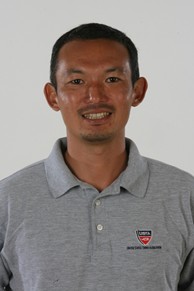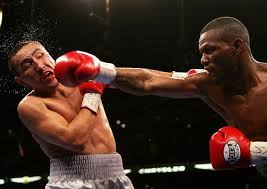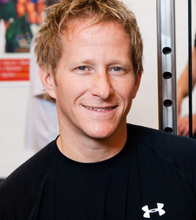MEMBER LOG IN
Categories
Links
Author Archives: ITPA admin
One Handed vs Two Handed Backhand? Performance Factors and Implications
Backhand groundstrokes are gaining importance in modern tennis. 20 or 30 years ago, many players had weaker backhands than forehands. In the modern game it is very difficult Continue reading
Posted in Backhand
Leave a comment
What are the Physiological Responses to Tennis Tournaments?
By Joshua Colmar, iTPA Intern
It is known that tennis is a very demanding sport. Tennis movement is a combination of eccentric-concentric muscle action; all movements are rapid and explosive and include accelerations, decelerations, stretches, jumps and strokes. Continue reading
Posted in Fatigue, Performance, Physiological Responses
Leave a comment
Video: Taking Care of Your Body During Week of Tennis Matches
Video by iTPA Executive Director Dr. Mark Kovacs discussing dos and don’ts of preparation and recovery during week of tennis matches. Geared toward tennis players, but coaches can glean important info as well to share with players. Continue reading
Posted in Dr. Mark Kovacs, Recovery, Video
Leave a comment
Traveling with a Tennis Player: Thoughts from a CTPS
By Dean Hollingworth, CTPS
It’s been a little over a month since I’ve come back home from the US Open. It took a bit of time to settle back into my routine and gather my thoughts on what was a great experience. Continue reading
Posted in General
Leave a comment
Using the Medicine Ball in Tennis: Understand the Intentions
By Jonny Fraser (iTPA MTPS, MSc, CSCS), Owner of Science in Tennis
Medicine balls are often used in tennis helping develop, endurance, strength and power. They provide a good tool to add external resistance, develop torso strength and stability whilst allowing training of tennis specific movements through the kinetic chain. Understanding what the intention of using Continue reading
Posted in Medicine Ball, Stability Training, Training
Leave a comment
WTFC Audio: Developing Tennis Player Panel Discussion & Jonathan Flinn: Year Round Strength and Conditioning Program for Collegiate Players
WTFC Audio: Developing Tennis Player Panel Discussion & Jonathan Flinn: Year Round Strength and Conditioning Program for Collegiate Players Continue reading
WTFC Audio: Satoshi Ochi, Tennis Specific Strength Training
WTFC Audio: Satoshi Ochi, Tennis Specific Strength Training
 Satoshi Ochi is currently the head strength and conditioning coach for the United States Tennis Association (USTA) where he oversees and manages the Strength and Conditioning / Athletic Training staff and programs the entire USTA Player Development Training Centers. He has more than 17 years of experience as a strength and conditioning coach including NCAA DI and USOC. Satoshi has worked with more than twenty top young American professional tennis players and several Jr. Grand Slam champions. Satoshi received his M.A. in Exercise Science from the University of Nebraska at Omaha. Prior to receiving his master’s degree, Satoshi played Division I tennis for the Creighton University BlueJays and earned his B.A. in Exercise Science. Satoshi holds the National Strength and Conditioning Association’s (NSCA) Certified Strength and Conditioning Specialist (CSCS), Certified Personal Trainer (CPT), and the International Tennis Performance Association’s (iTPA) Certified Tennis Performance Specialist (CTPS). Since 2004, Satoshi has received the NSCA’s Registered Strength and Conditioning Coach distinction (formerly known as Coach Practitioner), recognizing him as an elite strength and conditioning professional in the world. Satoshi also was a nominee of the 2001 NSCA College Strength and Conditioning of the Year. In addition to his role with the USTA, Satoshi also serves on the Advisory Board of the iTPA. Satoshi is based at the USTA National Training Center Headquarters in Boca Raton, FL. Continue reading
Satoshi Ochi is currently the head strength and conditioning coach for the United States Tennis Association (USTA) where he oversees and manages the Strength and Conditioning / Athletic Training staff and programs the entire USTA Player Development Training Centers. He has more than 17 years of experience as a strength and conditioning coach including NCAA DI and USOC. Satoshi has worked with more than twenty top young American professional tennis players and several Jr. Grand Slam champions. Satoshi received his M.A. in Exercise Science from the University of Nebraska at Omaha. Prior to receiving his master’s degree, Satoshi played Division I tennis for the Creighton University BlueJays and earned his B.A. in Exercise Science. Satoshi holds the National Strength and Conditioning Association’s (NSCA) Certified Strength and Conditioning Specialist (CSCS), Certified Personal Trainer (CPT), and the International Tennis Performance Association’s (iTPA) Certified Tennis Performance Specialist (CTPS). Since 2004, Satoshi has received the NSCA’s Registered Strength and Conditioning Coach distinction (formerly known as Coach Practitioner), recognizing him as an elite strength and conditioning professional in the world. Satoshi also was a nominee of the 2001 NSCA College Strength and Conditioning of the Year. In addition to his role with the USTA, Satoshi also serves on the Advisory Board of the iTPA. Satoshi is based at the USTA National Training Center Headquarters in Boca Raton, FL. Continue reading
Posted in World Tennis Fitness Conference
2 Comments
WTFC Audio: Liz Chaffin, Training and Rehabbing the Hips for Tennis
WTFC Audio: Liz Chaffin, Training and Rehabbing the Hips for Tennis Continue reading
Posted in World Tennis Fitness Conference
2 Comments
New Member Discount: Medicine Balls from Oncourt Offcourt
From our friends at Oncourt Offcourt: Continue reading
Posted in Discount
Leave a comment


